At Bird Ecology Lab, we teach undergraduate and graduate students on topics related to different aspects of bird ecology. In parallel, we conduct research that will allow us to gain further knowledge regarding the biology of different bird species, their life history strategies and functionality, along with the ecological processes that influence the birds’ responses (autoecology), as well as the biotic and abiotic factors that affect their populations (fitness). In order to accomplish this, Bird Ecology Lab uses observation and monitoring instruments, along with the material and equipment necessary for capturing and tagging different bird species. Also, technical staff and thesis students receive training on bird handling protocols, and in the collection, storage, transportation and analysis of different types of biological samples. In the context of different projects, we have acquired vast experience deploying cutting edge technological devices on wild birds, and carrying out experimental approximations under controlled conditions, at AustralAVEX.
Current Projects (2019)
At present, we are working on multiple projects involving research, monitoring and correlation, providing theses opportunities for doctoral, master’s and undergraduate programs, in addition to a postdoctoral project supported by international funding.
RESEARCH

Connectivity and Citizen science . Centro de Humedales Río Cruces – Applied reasearch
Highlighting the socioecologic value of a flagship species for the long-term conservation of the Río Cruces Wetland
Using the Black-necked Swan (Cygnus melancoryphus) as a model, this projects intends to explore the current state of the population of this flagship species by banding birds with collars readable from distance, and a few others with GPS/GSM devices, within the Río Cruces Wetlands area, along with the setup of a long-term monitoring scheme for these birds. Parallely, we seek to promote the participation of local communities in the project, including those with economic / business activities within the wetland area.
Results will contribute to development of adecaute management plans of the protected areas considerered in this project, especially the Carlos Anwandter Sancturary / Ramsar Site Rio Cruces Wetlands. Additionally, the project will produce results even beyond its implementation phase, as individually marked swans will continue being observed thoughout their life time.
By the end of 2018, the first 60 swans had been tagged and released. By April 2019, about 200 black-necked swans have been successfully marked with red collars.
Read more
¿Have you seen a black-necked swan with a red collar? Help us to know more about this species and its life history in the Río Cruces Wetland, by reporting your observation through this online form: visit www.cisnesconcollares.cl
Or mail us at cisnes@birdecologylab.cl, also if you had doubts about this initiative, or in in case you want to learn more about it.
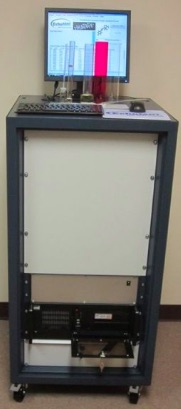
Quantum Magnetic Scanner (QMR) / FONDEQUIP – Basic Science
Exploring physiological limits of vertebrates using Quantum Magnetic Scanner (QMR) (FONDEQUIP EQM180055)
(Evaluar los cambios en la condición corporal de los animales es un tema central en ecofisiología, ya que están relacionados con la salud del individuo, su calidad, vigor y condición energética. En la actualidad los desarrollos tecnológicos de la medicina humana han posibilitado la existencia en el mercado de un Escáner de Resonancia Magnética (QMR) creado ad hoc para estudiar la composición corporal de pequeños animales (4-500 g), así como para estudiar sus tejidos (hasta 7 g). Este equipo ha sido contrastado de manera exhaustiva y reiterada en aves, reptiles, murciélagos, ratones o peces a la hora de determinar con gran precisión, de un modo no invasivo y en individuos vivos, la fracción no estructural de su composición corporal. Financiado por FONDEQUIP EQM180055, en colaboración con multitud de investigadores chilenos y de otros países, en 2019 se ha adquirido un QMR que permitirá medir en forma rápida e in vivo la composición corporal en animales conscientes (no anestesiados), permitiendo además realizar un seguimiento individual y sus cambios a través del tiempo.
El uso de un QMR representa una alternativa eficaz para reducir significativamente el número de animales de un estudio y de refinamiento al ser un procedimiento rápido y poco invasivo. Particularmente, permitirá plantear experimentos que de otro modo serían inviables en el marco del actual desarrollo y legislación Bioética en la experimentación con animales en diferentes disciplinas. La adquisición de un QMR permite además incrementar notablemente las facilidades del Aviario Experimental (Austral-AVEX) para la investigación con aves silvestres, contribuyendo a posicionarlo como Laboratorio de referencia para la investigación con aves migratorias.)
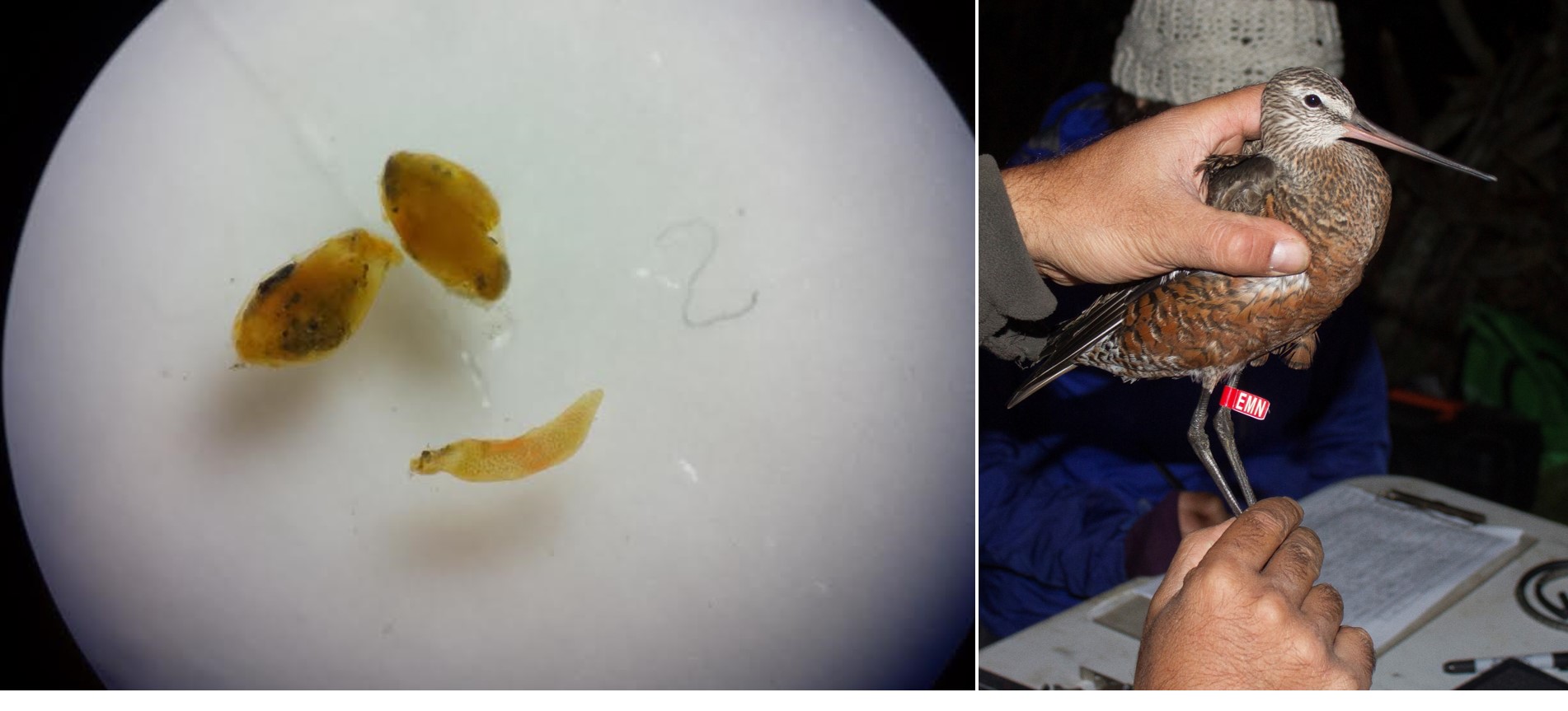
Costs of infections in migratory birds / Hudsonian Godwit; FONDECYT – Basic Science
Balancing the costs of infection and immune response in a trans-hemispheric host: Are long-distance migrants potential spreaders of emerging pathogens? (FONDECYT 1191769)
This project, led by Dr. Claudio Verdugo as the principal researcher, aims at quantifying the costs related to infections with parasites (micro and macro) and compare them with those of building up an immune response in hosts with a high capacity of dispersion. We will use Hudsonian Godwits (Limosa haemastica) as model species to empirically test the potential of long-distance migrants as vectors of pathogenes and transmitters of diseases.

Functionality of polyunsaturated fatty acids during bird migration / Shorebirds; PLAN NACIONAL (Spain) – Basic Science
The function of long-chain polyunsaturated fatty acids in animal migration
Principal researcher: José A. Masero, Universidad de Extremadura, Spain
This project aims at deepening the understanding of how the n-3 LCPUFAs affect the functions and physiological consequences that determine the flight performance of migratory animals. In particular, how migratory species without access to food containing n-3 LCPUFAs can obtain these fatty acids in order to increase fitness and general survival, by using some novel physiological tools.
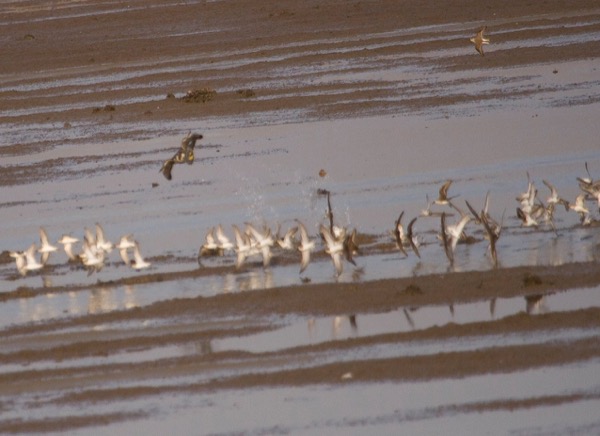
![]() Predator-prey interactions in anthropognic habitats. ENVIRONMENT CANADA – Applied Research
Predator-prey interactions in anthropognic habitats. ENVIRONMENT CANADA – Applied Research
Forage of shorebirds and risk of predation in shrimp farms during the non-reproductive season in North-Eastern Mexico
Shrimp-farming development has greatly expanded on Pacific tropical coasts, transforming mangroves and saltmarshes by diking, and thus potentially reducing overall intertidal foraging habitats for shorebird populations during the non-breeding season (October to March). At Sinaloa (Northwestern Mexico), several thousend hectares are currently dedicated to shrimp-farming. This
geographic area has many coastal wetlands designated within the Western Hemisphere Shorebird Reserve Network of importance for Nearctic migratory populations. Previous studies found that many of the shorebird species that breed in Canada and spend the non-breeding season in Mexico forage extensively at ponds on shrimp-farms during harvest season. Furthermore, the shrimp farm
also provides a number of perches for raptors that can prey upon on foraging birds. This study explores potential drivers of use of the shrimp-farms by shorebirds and estimates if predation risk can counteract any benefit that shrimp-farm may provide to foraging shorebirds.

Integration of traditional land use activities / Hudsonian Godwit; COASTAL SOLUTIONS – Applied Sciences
In this project, led by Dra. Natalia Martínez-Curci as principal researcher, we study the distribution, abundance and physiology of shorebirds wintering in Chiloé, along with the socioeconomic context of aquaculture activities, in order to generate a model for adaptive management aiming at identification of solutions to reduce impacts of these human activities on shorebirds. Aditionally, we will engage in working jointly with local communities to develop the mecanisms for successful implementation of these recomendations.
further reading at: http://en.solucionescosteras.org/natalia-martinez/
MONITORING

Birdlife of the Río Cruces Wetlands (RCW; Humedal del Río Cruces)
Project: ENVIRONMENTAL MONITORING PROGRAM in RCW
Monitoring: Composition of the assamblage, physical condition and biological efectivity of riparian birdlife of RCW
The goal is to obtain reference information about assamblages of birds of the riparian áreas of the wetland, in order to develop a system of indicators and variation ranges which allows to evaluate structural and functional changes of the RCW in the future. Since 2015, a systematic monitoring of riparian birdlife has been carried out within the wetland, focussing on three models to be studied in more detail: structure and composition of the bird assamblage, physical conditions and apparant survival of wetland birds, mainly Tachuris rubigastra (Siete Colores, Many-Colored Rush Tyrant), Anairetes parulus (Cachudito, Tufted Tit-Tyrant), Phleocrytes melanops (Trabajador, Wren-like Rushbird) and Elaenia albiceps (Fío-fío, White-crested Elaenia).
By the end of 2018, samples had been taken from more than 1000 banded birds (of 26 different species). In addition, we observe and analyze reproduction parameters of Ardea cocoi (Garza cuca, Cocoi Heron); and density and phenology of Gallinago paraguaiae (Becasina; South american Snipe).
The results will be used as part of a system of indicators for habitat quality in the Río Cruces Wetland.
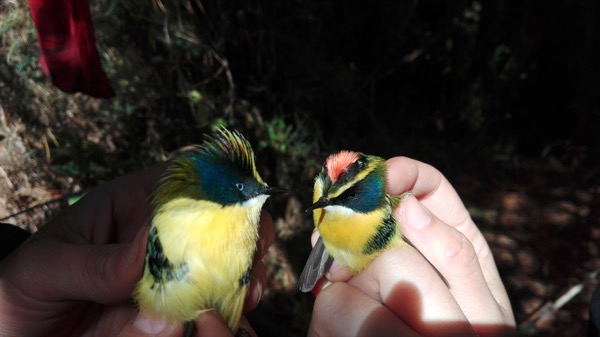
Urban wetlands project: INVENTORY OF WETLANDS OF THE CITY OF VALDIVIA
Monitoring assamblages of marshland birds associated to urban wetlands in Valdivia
The structure and composition of marshland bird assamblages associated to urban wetlands located near the urban sprawl areas of the city of Valdivia are virtually unknwon. The purpose is to obtain baseline reference information that will allow the evaluation of eventual changes in structure and functions of these wetland areas.
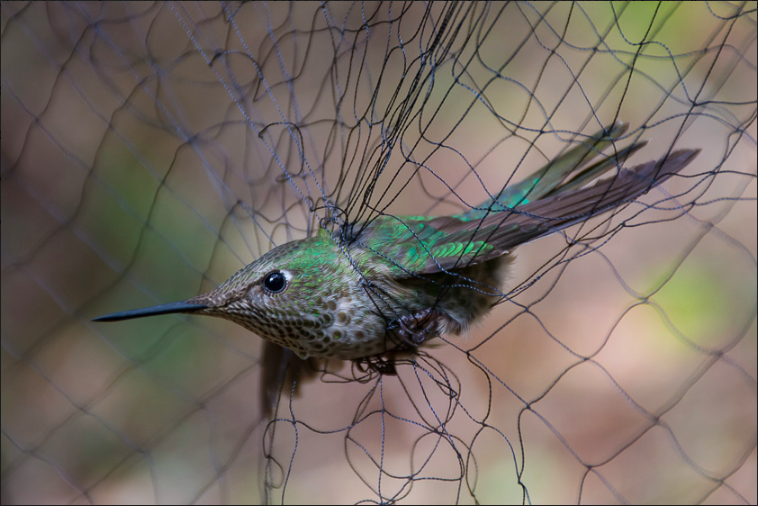
Quempillén Experimental Field Station (Ancud, Chiloé province), Long-term bird monitoring, Universidad Austral de Chile
Monitoring bird assamblages associated to the forest-estuary ecotone
Long-term monitoring programs of local bird populations are very rare in South America. Within the concession area of the Quempillén Experimental Station, located near Ancud, Chiloé, since January 2015 we have set up a bird banding station with constant bird sampling effort, including tagging of various Passerine species and Green-backed Firecrown (Picaflor chico, Sephanoides sephaniodes), along with collecting biometric data and different kinds of samples.
By the end of 2018, more than 750 samples had been taken yet (from 23 different bird species).
COMMUNITY ENGAGEMENT
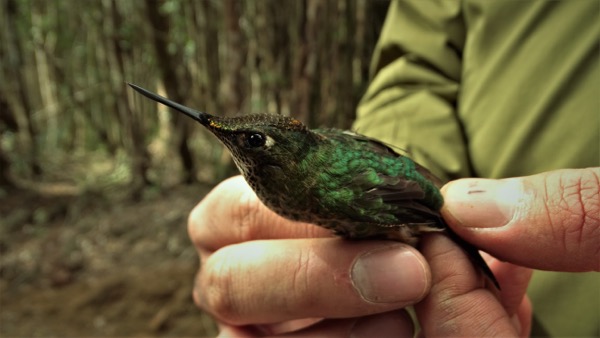
EXPLORA: Programa Abramos Nuestros Laboratorios a la ciencia escolar 2018
Proyecto: Conociendo a una especie de apetito voraz, maestra en el arte de volar
En el Centro-Sur de Chile habita el colibrí más austral del continente; el Picaflor Chileno Sephanoides sephaniodes, residente anual en gran parte de su área de distribución. Este picaflor visita flores de color amarillas, naranjas y rojas con forma de corola tubular larga, aunque sólo las plantas con flores adaptadas a su morfología son polinizadas de forma efectiva. Como la mayoría de los colibríes, el macho es más grande y exhibe una conducta territorial, defendiendo activamente sus áreas de alimentación de otros machos y hembras, inclusive en período no reproductivo. Las hembras, por su parte, son oportunistas y realizan rápidas intrusiones dentro los territorios de los machos. Además, los picaflores expuestos a bajas temperaturas y menor oferta de alimento tienen la posibilidad de pasar por estadíos de letargo.
La mayor parte de los estudios que utilizan esta ave como modelo se han realizado durante la época reproductiva (primavera-verano), siendo muy escasos los estudios durante otras estaciones. En este proyecto, estudiantes de enseñanza media (Escuela México) realizaron un experimento sencillo y replicable en otras áreas, para tratar de comprender diferentes aspectos fisiológicos y/o conductuales en esta especie.
Read more
La mayor parte de los estudios que utilizan esta ave como modelo se han realizado durante la época reproductiva (primavera-verano), siendo muy escasos los estudios durante otras estaciones. En este proyecto, estudiantes de enseñanza media (Escuela México) realizaron un experimento sencillo y replicable en otras áreas, para tratar de comprender diferentes aspectos fisiológicos y/o conductuales en esta especie.
Finished projects
A continuación algunos de los proyectos ya ejecutados por el el labortorio en los últimos años.

Assessing sub-lethal pollution effects on wildlife: prevalence of antibiotic resistance in coastal environments and associated costs to migratory birds
Using one of the most striking long-distance migratory shorebird as a model species, the
Hudsonian godwit Limosa haemastica, the present project aims to investigate the effects of environmental exposure to antibiotics in intertidal soft-bottom assemblages and responses of top consumers. Results of this project can be a valuable tool to monitor environmental quality and management human activities. Up to the end of 2018, more than 600 birds were sampled.

Potential role of shrimp farms as alternative habitats / Shorebirds; PACKARD FOUNDATION – Applied Science
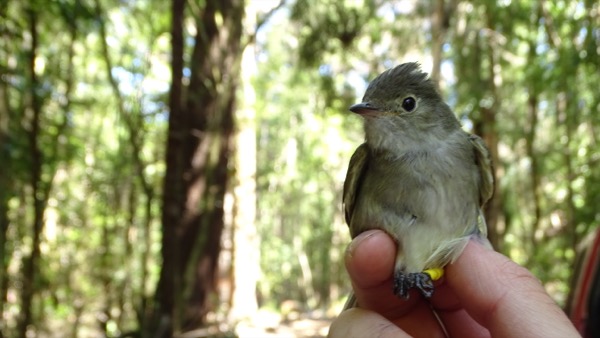
Birds in secondary forests. FONDECYT – Applied Science
Principal researcher: Pablo Donoso, Universidad Austral de Chile
By the end of 2018, more than 500 samples had been taken yet (from 14 bird species).
